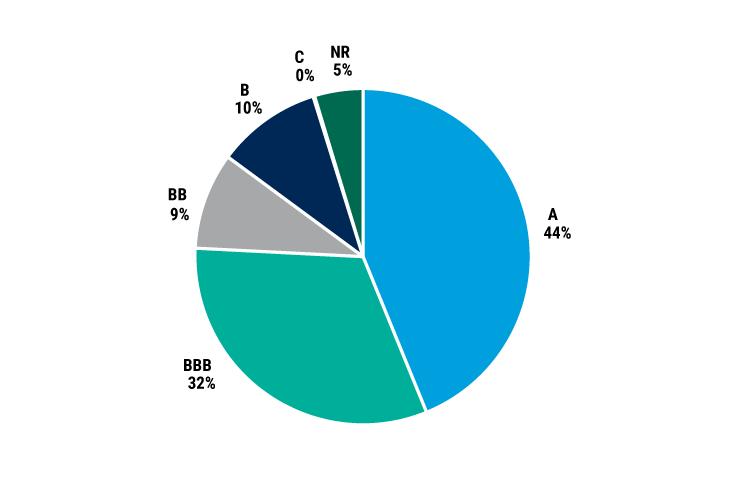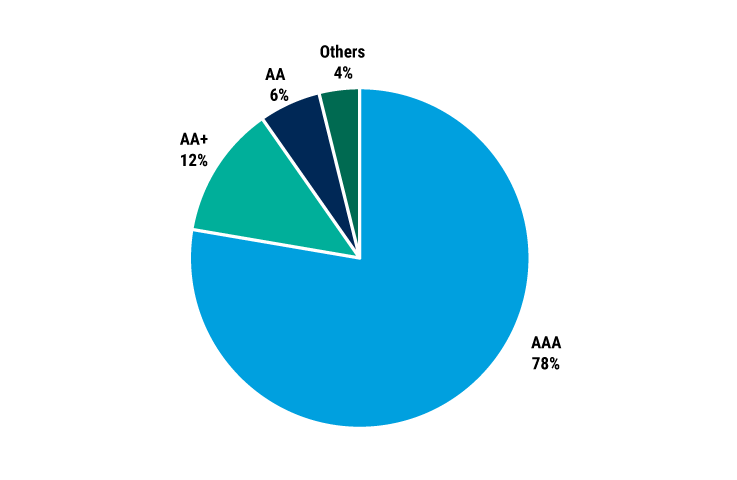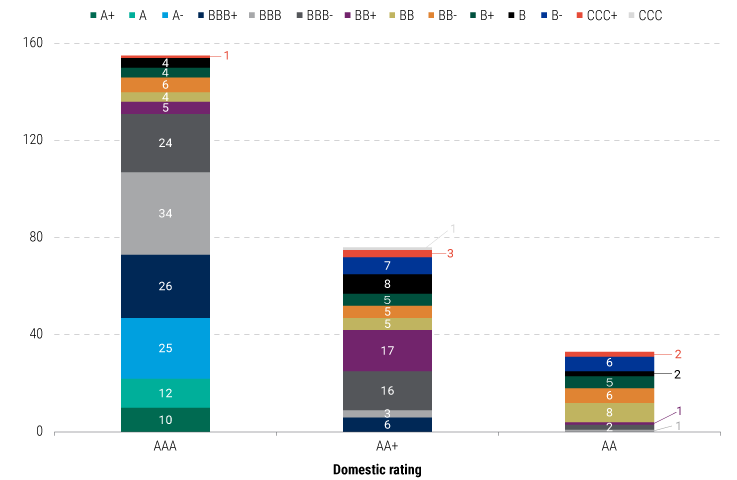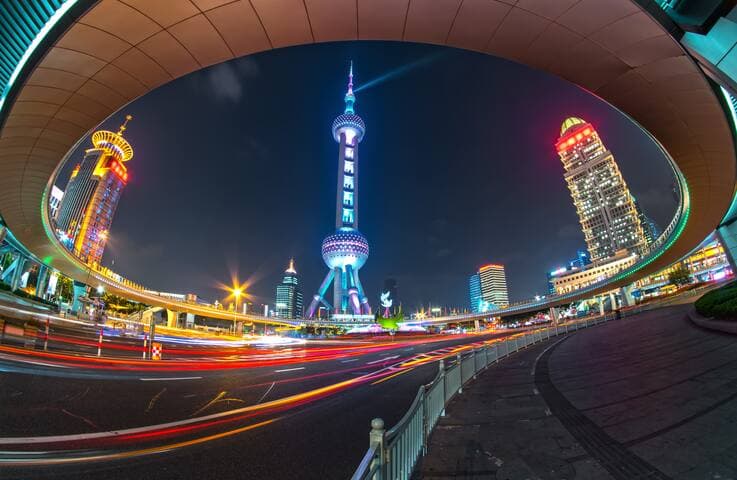Select your geography
Americas
Breaking Down China Huarong’s Debt Case: What It Means for China’s Bond Market

Arthur Lau, CFA
Co-Head of Emerging Markets Fixed Income, Head of Asia ex Japan Fixed Income

Andy Suen CFA, FRM
Co-Head of Asia ex-Japan Fixed Income

Fan Zhang, CFA
Portfolio Manager & Credit Analyst, Fixed Income
On 31 March, China Huarong Asset Management Company failed to release its 2020 financial results, spooking investors and precipitating a selloff in its bonds and those of its subsidiaries. The case has also prompted rating agency actions or reviews of the company’s and its subsidiaries’ ratings pending government support.
The Huarong case is testing market assumptions regarding the credit risk of Chinese state-owned enterprises (SOEs) and their offshore subsidiaries, with implications for ratings across the sector.
We believe Huarong’s case does not indicate a systemic risk. Our baseline scenario is that the central government will continue to support the company to honor its debts.
We believe any default by a centrally owned, strategically important entity would indicate the central government’s determination to clean up bad debts and strengthen the system.
In the long run, China’s move toward a more market-oriented approach to credit risk pricing (i.e., letting SOEs default) will be beneficial to its fast-growing onshore bond market and its investors.

The unfolding credit situation involving one of China’s largest state-owned distressed asset management companies, China Huarong Asset Management Company, is testing the market’s long-held assumptions regarding the credit risk of Chinese state-owned entities. Among other issues, the company failed to release its 2020 financial results at the end of March, precipitating a selloff in its bonds and those of its subsidiaries, and rating agencies have responded by downgrading the company’s and its subsidiaries’ ratings or placing them under review pending formal government support.1
How the company’s situation plays out may have a profound impact on China’s onshore bond market, the world’s second-largest individual bond market2, as well as China’s offshore bonds. Here we offer our analysis of what has happened thus far and what’s at stake, and explore potential short- and long-term implications of the case under different scenarios. We underscore that our baseline scenario is that the central government will continue to provide support to Huarong to honor its debts.
What is Huarong, and why is it significant?
China Huarong Asset Management Company was formed in 1999 as one of four asset management companies (AMCs) tasked to purchase and dispose of the nonperforming loans (NPLs) of China’s four major state-owned banks after the 1997-1998 Asian financial crisis. The creation of these AMCs marked watershed for China in its effort to clean up its banking system. Since then, aside from its key role in distressed debt asset management, the company has grown into a sprawling business providing banking, securities, trust, financial leasing, investment, futures, and consumer finance services, with CNY1.7 trillion (US$262 billion) in assets.3 In 2015, the company was listed in Hong Kong and remains majority owned by the Chinese Ministry of Finance. Credit rating agencies factored in this strong ownership and systemic status in issuing a high rating for its bonds, banking on the strong likelihood that the central government will provide support should the need arise.
On 31 March 2021, the company failed to release its 2020 financial results (and has since missed a second deadline), prompting the selloff of its bonds and those of its subsidiaries as investors worried about the group’s financial health amid reports of a potential restructuring. Separately, the company’s former chairman was executed in January after being convicted of receiving and seeking CNY1.8 billion in bribes during his time as banking regulator.4
China Huarong AMC has US$21.3 billion in outstanding offshore US dollar bonds, which are issued or guaranteed by its offshore financing entity China Huarong International Holdings Ltd.5 However, absent swift and unequivocal credit support from the government, major international ratings agencies have either put the company’s and its subsidiaries’ ratings under review for a potential downgrade or cut its credit ratings.6 This could have significant implications on other state-owned issuers and the market as a whole.
Short-term implications of a negative scenario: credit reassessment and repricing for select issuers
Defaults by Chinese state-owned enterprises have occurred in recent years, challenging the long-held notion that government-linked borrowers enjoy government credit guarantees. Many Chinese SOEs currently have high credit ratings despite weak standalone credit profiles because of this implicit guarantee.
That said, defaults by a central government-supported entity (as compared to a local government-supported one) are rare. Market participants and rating agencies have been assuming a very high likelihood of government support to central government-owned entities and their core offshore subsidiaries, especially those with policy roles. Therefore, any restructuring of an entity of Huarong’s scale deviates from such expectations and would lead to a significant reassessment of the credit risk profiles of state-owned entities, particularly their offshore subsidiaries.
If government support is not timely or falls short of expectations, it is likely to result in ratings downgrades in the state-owned sectors. We would expect to see a material impact on the following sectors in such a negative scenario:
AMCs. We would expect the reassessment to lead to a downgrade of one or more notches for AMCs in general. That said, we do not think Huarong’s problem indicates that other AMCs have similar credit concerns given that Huarong’s problem is idiosyncratic and mainly linked to legacy exposure acquired before the arrest of its former chairman in 2018.
SOEs and local government financing vehicles (LGFVs). As we have previously noted in our paper “Unlocking China’s Hidden Bond Treasures,” the assumption of government support to SOEs and LGFVs (entities 100%-owned by local governments to finance their projects, usually infrastructure related) needs to be assessed on a case by case basis, depending on their ownership structure. In terms of credit rating, Huarong’s case may lead to a reassessment of this sector’s credit quality, with downgrade pressure on the weakest entities. In general, local SOEs, and LGFVs would be more vulnerable given that China’s de facto cabinet, the State Council, has reiterated its stance of pushing for a more market-oriented approach for these entities. For central SOEs, bonds issued by offshore entities with a keepwell structure (a provision common in Chinese offshore bond covenants wherein the parent company pledges to keep the offshore entity issuing the bonds solvent, but without necessarily guaranteeing bond repayments) will also likely be repriced.
Banks. If policymakers were to restructure Huarong’s debts, we think they will be watching the situation closely and be ready to prevent instability in the financial system. Nonetheless, we expect the market will start pricing in weaker asset quality and less government support for the weakest banks. The country’s biggest banks, however, are well capitalized and are of systemic importance and should not face material fundamental pressure. In addition, it should be noted that Huarong plays an important role in financial stability by collecting approximately 30%-40% of NPLs disposed by the banking system.7 Disruption of its operations could result in greater retention of NPLs on banks’ balance sheets in the near term.
We believe any default by a centrally owned, strategically important entity would indicate the central government’s determination to clean up bad debts and strengthen the system. We think local SOEs and LGFVs face a higher risk of being targets. This is a structural problem in China, and the intention to reduce financial risk in this space has been reiterated in policy statements in recent years. We think the government could take advantage of the current strong macro backdrop to weed out some financially unviable entities.
Long-term implications: structural changes to onshore and offshore debt markets, regardless of Huarong’s outcome
Irrespective of the eventual outcome of this case, we believe China’s move toward more market-oriented pricing of credit risk is a positive development in the longer term because it encourages efficient risk pricing, particularly in the onshore local bond market.
Onshore market
To a large extent, the hard-currency Chinese offshore bond market has been differentiating credit risks, as reflected in the wider range of credit ratings (see chart below) and credit spreads.
Chinese Offshore Bonds Are More Differentiated Than Onshore Bonds in Terms of Ratings
Market value of offshore USD bonds by rating

Source: JACI as of 31 March 2021. For illustrative purposes only. We are not soliciting or recommending any action based on this material.
In contrast, credit differentiation in the onshore yuan market is still a work in progress, with 78% of rated onshore bond issuers concentrated in the AAA category (based on domestic rating agencies).
Market value of onshore credit bonds by rating

Source: WIND, PineBridge Investments as of 31 December 2020. For illustrative purposes only. We are not soliciting or recommending any action based on this material.
The chart below shows the international ratings of issuers that are rated AAA/AA+/AA under the domestic rating framework. If we look at the AAA category, these issuers can be further differentiated into a wide range of credit profiles (from A+ to as low as single-B) under the international rating framework. This is why we believe the government’s market-oriented stance will impact the onshore market more significantly.
Top Domestically Rated Issuers Have Highly Differentiated International Ratings
International ratings of issuers that have AAA, AAA+, and AA domestic ratings

Source: Wind, Bloomber HSBC, as of October 2019, For illustrative purposes only. We are not soliciting or recommending any action based on this material.
Offshore market
For the offshore US dollar bond market, we see different implications for different sectors:
Privately owned enterprises (POEs). Most Chinese high yield bonds fall under this category. We do not expect major implications beyond a short-term sentiment impact, since bond ratings and spread pricings are largely based on the issuers’ standalone profile.
SOEs. We expect more differentiation in credit ratings and pricing among SOEs as some of the support assumptions are reassessed over time. Select entities with strategic policy roles will still have government support. On the other hand, entities with no clear policy role and owned by weaker local governments will likely see lower ratings and spreads should trend wider over time.
LGFVs. In 2014, the government announced a plan to separate local government debts into two groups: one with explicit guarantees, and another with no guarantees and which will be handled on a market-oriented and commercial basis over time. LGFVs dominated the latter group. Since 2014, the market has gradually increased its focus on fundamentals. Up to now, there have not been real default cases leading to credit losses for bond investors, except for a few technical defaults or small delays in repayments. However, there have been default cases among LGFVs in other funding channels, such as trust loans, bank acceptance bills, and private funds. In its latest statement, “Opinions on Further Deepening the Reform of the Budget Management System,” released on 13 April 2021, the central government reiterated its stance that local SOEs and LGFVs should resolve debt problems via a market-based approach.
We expect LGFV bond defaults to emerge in the coming years, with the highest funding risks among entities with the least important policy roles and those associated with the weakest local governments. Entities with clear social functions and owned by the strongest governments (for example, a subway operator in a Tier 1 city) will face fewer challenges. We are generally not constructive on this sector, as we believe the credit ratings and credit spreads are still not adequately reflecting these risks.
The way forward
Overall, the Huarong case will have implications on how the market will price Chinese bonds in the future, and will challenge the rating agencies’ long-held approach to incorporating the likelihood of government support. We believe that regardless of the outcome for Huarong’s bonds, it will provide an indication of the government’s approach and proactiveness in addressing legacy debt problems in the system. We expect the government will take advantage of the strong macro backdrop post-Covid-19 to continue to reduce financial risks in the system.
Moreover, the case serves as a reminder of the importance of credit differentiation in the large and diverse universe of Chinese state-owned issuers. Thorough credit research into the often labyrinthine ownership structures and guarantees, on top of fundamentals, should help investors discern these entities’ standalone creditworthiness – a critical consideration when even large and seemingly centrally backed entities could still end up in dire straits. We continue to reiterate that the Chinese bond market offers plenty of high-quality opportunities. However, a more selective approach is critical to effectively navigate their idiosyncratic structure.
Footnotes
1As of 27 April 2021. Fitch downgraded the company’s credit rating by three levels on 27 April from A to BBB.
2WIND as of 31 December 2020
3Source: China Huarong AMC as of September 2020. Refers to total assets in full-year 2019. See China Huarong AMC, “2020 Interim Results” http://www.chamc.com.cn/en/InvestorRelations/ResultsAnnouncements/2020/75187.shtml
4See Reuters, “Former China Huarong chairman executed after bribery conviction,” 29 January 2021 https://www.reuters.com/article/us-china-huarong-lai-idUSKBN29Y1P2
5Bloomberg as of 28 April 2021
6As of 27 April 2021. Fitch downgraded the company’s credit rating by three levels on 27 April from A to BBB.
7Company reports and announcements as of 28 April 2021
Disclosure
Investing involves risk, including possible loss of principal. The information presented herein is for illustrative purposes only and should not be considered reflective of any particular security, strategy, or investment product. It represents a general assessment of the markets at a specific time and is not a guarantee of future performance results or market movement. This material does not constitute investment, financial, legal, tax, or other advice; investment research or a product of any research department; an offer to sell, or the solicitation of an offer to purchase any security or interest in a fund; or a recommendation for any investment product or strategy. PineBridge Investments is not soliciting or recommending any action based on information in this document. Any opinions, projections, or forward-looking statements expressed herein are solely those of the author, may differ from the views or opinions expressed by other areas of PineBridge Investments, and are only for general informational purposes as of the date indicated. Views may be based on third-party data that has not been independently verified. PineBridge Investments does not approve of or endorse any republication of this material. You are solely responsible for deciding whether any investment product or strategy is appropriate for you based upon your investment goals, financial situation and tolerance for risk.



